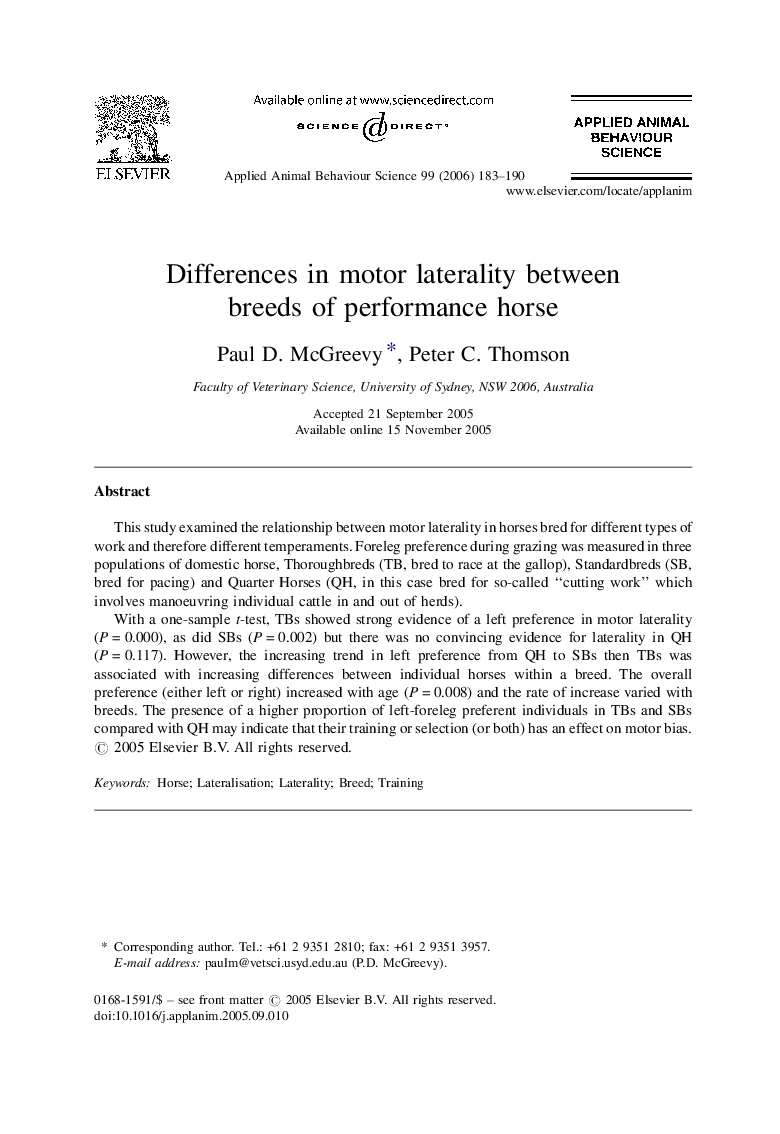| Article ID | Journal | Published Year | Pages | File Type |
|---|---|---|---|---|
| 4524211 | Applied Animal Behaviour Science | 2006 | 8 Pages |
This study examined the relationship between motor laterality in horses bred for different types of work and therefore different temperaments. Foreleg preference during grazing was measured in three populations of domestic horse, Thoroughbreds (TB, bred to race at the gallop), Standardbreds (SB, bred for pacing) and Quarter Horses (QH, in this case bred for so-called “cutting work” which involves manoeuvring individual cattle in and out of herds).With a one-sample t-test, TBs showed strong evidence of a left preference in motor laterality (P = 0.000), as did SBs (P = 0.002) but there was no convincing evidence for laterality in QH (P = 0.117). However, the increasing trend in left preference from QH to SBs then TBs was associated with increasing differences between individual horses within a breed. The overall preference (either left or right) increased with age (P = 0.008) and the rate of increase varied with breeds. The presence of a higher proportion of left-foreleg preferent individuals in TBs and SBs compared with QH may indicate that their training or selection (or both) has an effect on motor bias.
